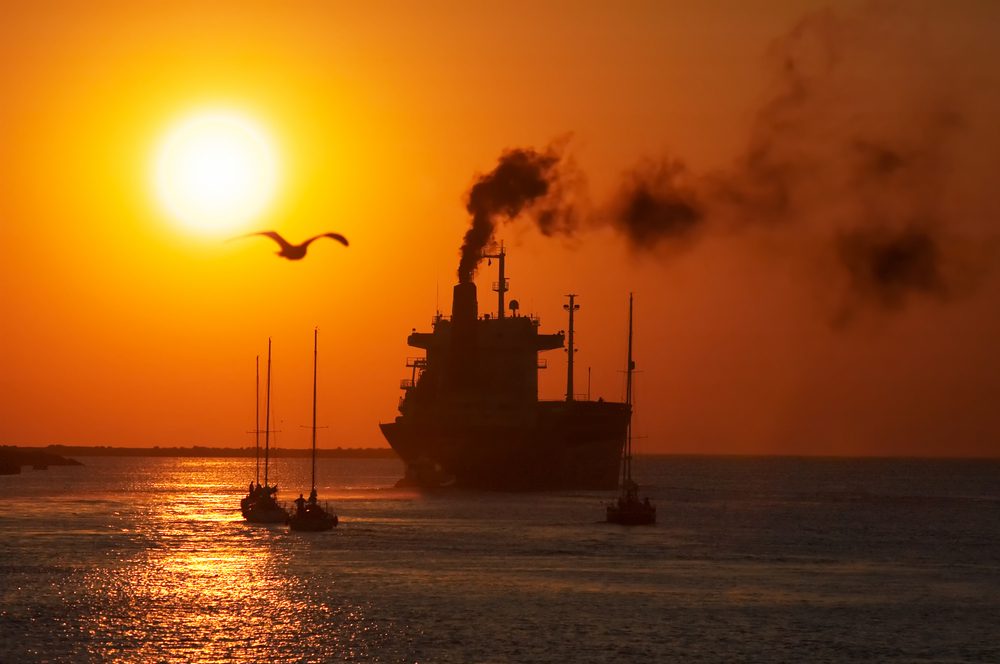U.S. Customs Revenue Tops $100 Billion for First Time Amid Tariff Surge
US revenue from customs duties this fiscal year surpassed $100 billion for the first time, reflecting higher tariffs imposed by the Trump administration.

FILE PHOTO: By Eric Gevaert / Shutterstock
By Barry Parker – Over the past year, “sustainability” has ratcheted upward to the top of the shipping industry’s radar. The activity will be ramping up now as the International Maritime Organization (“IMO”) takes steps to actualize objectives specified in its 2018 statement of strategy to reduce greenhouse gas emissions from ships, which laid down the marker for the maritime industry to reduce shipping’s “carbon intensity” in 2030 by 40%, compared to a 2008 baseline.
A virtual meeting of the Intersessional Working Group on Reduction of GHG Emissions from Ships (ISWG-GHG 7), held during late October 2020 came up with recommendations (proposed draft amendments to the MARPOLconvention, specifically Annex VI chapter 4) which will next go before the upcoming meeting of the IMO’s all-important Marine Environmental Protection Committee (MEPC). This meeting (dubbed MEPC 75) will occur, also virtually, later this month, in mid November. If the Working Group’s amendments pass muster at MEPC 75, they would then be put forward to be adopted at the next confab of the MEPC, designated as MEPC 76, to be held sometime in 2021.
According to the IMO, “The MARPOL treaty requires draft amendments to be circulated for a minimum six months before adoption, and they can enter into force after a minimum 16 months following adoption.” That would be sometime in 2023.
The substance of the Working Group’s MARPOL amendments creates a new measurement, known as the Energy Efficiency Design Index for Existing Ships (the “EEXI”), which utilizes the methodology of the Energy Efficiency Design Index (“EEDI”), a measure that’s been applied to newbuilds since 2015, and applies it, on a one-time basis, to existing ships. The amendments also beef up the Ship Energy Efficiency Management Plan (SEEMP), which has been around since 2011.
According to Class society DNV-GL, “The intention is to mandate year-on-year operational efficiency improvements using so-called Carbon Intensity Indicators (CII) – e.g. Annual Efficiency Ratio (AER – grams CO2 per dwt-mile) or Energy Efficiency Operational Indicator (EEOI – grams CO2 per tonne-mile).”
Efficiency can be improved in various ways, for example through improved hull design, or fine tuning onboard machinery. Noteworthy also is a proposed rating system for vessels; the idea is that charterers would pay up for vessels with “A” or “B” ratings, contrasted with those rated “ D” or “E” which would likely to be hired at discounted rates.
So all good now? Not exactly; criticism of the proposed changes came quickly from groups such as Europe’s non-profit Transport & Environment (which has “Observer” status at the IMO), who labeled the draft amendments as “business as usual,” pointing to issues with the new EEXI. They also focused on the lack of actual quantitative “carbon intensity” targets – all those abbreviations notwithstanding, among other criticisms.
But here’s the thing; in spite of the very best of intentions- the IMO, like everyone else, is sailing through a thick fog (maybe at lower speeds, another way to boost efficiency). We simply don’t have a good handle on “alternative fuels” that will propel the industry towards IMO targets. Discussions of fuels can not be limited simply to arguments about whether ammonia is better than hydrogen, or whether methanol might be more viable than biofuels, etc, etc. Rather, needed conversations should encompass “big picture” issues like encouraging decarbonization actions through levies or financial mechanisms (swaps, for example) which would fund research and development, and how to build out a fuels infrastructure that is said to cost $Trillions.
For long-time industry veterans, a more vexing question is how the notoriously “fragmented” shipping business might actually come to actionable agreement on such things. Some thoughtful voices have suggested that cargo interests need to be footing the bills, and therefore, have a seat on the navigation bridge (perhaps at the helm) designing the much needed grander plan.
In my view, while the IMO is imperfect, it’s the best game in town, at present, for prodding the maritime business’s decarbonization efforts towards 2050 (and beyond). Until something better comes along (and groups like the Global Maritime Forum may indeed offer some improvements), industry needs to follow the IMO’s passage plan.
Note: This article was originally published November, 6, 2020.

Sign up for gCaptain’s newsletter and never miss an update

Subscribe to gCaptain Daily and stay informed with the latest global maritime and offshore news


Stay informed with the latest maritime and offshore news, delivered daily straight to your inbox
Essential news coupled with the finest maritime content sourced from across the globe.
Sign Up